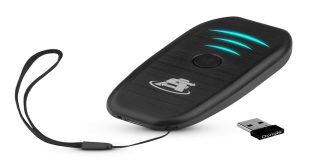If you suffer from chronic neck pain, chances are your doctor or physical therapist has mentioned trying cervical traction therapy. This type of treatment involves gently stretching the neck to relax the muscles and alleviate pressure on the spine.
Special traction devices are used to provide the perfect amount of force in a comfortable position. But how exactly does a cervical traction device work to relieve neck and upper back pain? Let’s take a closer look.
What is Cervical Traction?
The cervical spine refers to the neck region of the spine. Cervical traction is when a carefully calibrated amount of pulling force is applied to the head to gently stretch the neck. This immediately reduces the compression between the vertebrae which contributes to many common causes of neck pain like herniated discs, pinched nerves, muscle strain, and cervical arthritis.
Traction devices allow patients to administer safe, effective traction therapy on their own time in the comfort of their homes. Units are fully adjustable with control over the angle of pull and intensity of the traction force.
Treatments last anywhere from 10-20 minutes per session. Patients usually feel an immediate decrease in pain and an increase in mobility after using cervical traction.
How Cervical Traction Devices Work
Cervical traction devices have a very straightforward and user-friendly design. Patients lie down on a padded table surface with their heads secured in a comfortable head harness. The head strap connects to a traction mechanism that provides a gentle pulling force.
There are a few different ways that modern home cervical traction units generate the traction pull:
Pneumatic Air Traction
This type of cervical traction device has an air pump similar to a blood pressure cuff that inflates to slowly pull on the head strap. The traction force can be precisely adjusted up to 50 lbs or more. Pneumatic units have an air pressure gauge and release valve to give the patient full control.
Mechanical Traction Devices
Mechanical traction devices have a mechanical crank or gear system to ratchet up the tension and apply a steady pull to the neck. The traction force is measured by tension indicators on the device. To release the pull, patients simply crank the mechanism.
Gravity Assisted Traction
Gravity-assisted devices use body positioning to allow a portion of the patient’s own body weight to provide cervical traction. The head end of the table can be tilted downward and the height adjusted to increase or decrease the force of traction. This type of device typically doesn’t allow for force measurements.
Ideal Traction Force
Patients should always consult their doctor or physical therapist to determine the ideal level of traction force. Factors like the specific condition, pain levels, and body weight determine how many pounds of pull should be applied. Most patients start with 10-20 lbs of traction force and work up from there.
Proper traction angle is also key for the best results. Cervical traction devices allow users to adjust the angle of pull between 15-25 degrees. The optimal angle stretches the neck while avoiding overarching the back or hurting the jaw.
Try a Cervical Traction Device Today
Traction therapy has been used for many decades to successfully treat chronic neck, shoulder, and upper back pain. Today’s at-home cervical traction devices make it simple to administer safe, customizable traction sessions right from your living room.
With full control over the intensity and duration of treatment, cervical traction devices help provide lasting pain relief and improved mobility. You should definitely try out one if you’re looking for a non-invasive, drug-free solution to alleviate your discomfort and improve your overall well-being.
 Isaiminia World Breaking News & Top Stories
Isaiminia World Breaking News & Top Stories




